Hong Kong is a calm, slow, idyllic, low-rise, and bicycle-friendly place with lots of greenery and nice white-sand beaches. Sounds hard to believe? That’s because I’m not talking about the Hong Kong most people know: a dense metropolis and shopping destination whose skyline is filled with tall skyscrapers and glitzy malls. Out of the city center, in the countryside and on the small islands that surround Hong Kong Island – where the central business district is located – a very different side of the territory thrives, providing visitors and city dwellers with a respite from the cacophony of downtown Hong Kong.
From picturesque beaches in Tai Long Wan to a traditional village in Lai Chi Wo and the boulder-studded hills of Lamma Island, Hong Kong’s landscape is so diverse it will surprise anyone who only expects to see modernity in this former British colony. Of all the small islands within Hong Kong’s territory, Cheung Chau is probably the most famous, which is the reason why it’s only on my fifth visit to the city that I finally make a detour to what is colloquially known as the “Dumbbell Island”, thanks to its shape. On a sunny day in late December, after meeting up with one of James’s high school friends over a satisfying full English breakfast in the city, we leave for the Central Ferry Pier and take the boat departing to Cheung Chau.
Almost one hour after gliding through the calm water with Hong Kong’s high-rise buildings slowly disappearing into the horizon, the ferry’s engine turns calmer as we approach the pier on Cheung Chau. Its appearance couldn’t have been a starker contrast to that of Hong Kong Island’s. Instead of skyscrapers, there are only two- to three-story houses in the main town, and as opposed to the reclaimed coastline of the main island’s northern side, the beach on Cheung Chau is entirely natural. Everyone, including us, gets off the board in an orderly manner – there’s no rush, just a jovial feeling most passengers share.
We arrive at a wide open space, a small plaza if you will, surrounded by shops, restaurants, and houses. Fried ice cream. A banner showing the flavors of this improbable dessert catches my attention at one side of the plaza, and soon enough James talks to the vendor in Cantonese and orders two lychee fried ice creams. How do you fry something that melts at room temperature? My curiosity does not last long as I watch the vendor unwrap two white balls from a freezer, poking two wooden sticks into them, and deep-frying them in hot vegetable oil that has darkened. Apparently the mochi-like outer layer protects the cold ice cream inside and helps soften it slightly to make it easier for immediate consumption. The now yellowish ball tastes as good as it is odd, and I secretly wish to have another one with a different flavor.
Still full from the big breakfast and refreshed by the fried ice cream, we start exploring Cheung Chau on foot, one of only two ways of getting around the island – the other being by bicycle. On a leisurely stroll, Cheung Chau looks like a place where life seems to take a much simpler and less demanding form than on Hong Kong Island. People walk slowly, the streets and alleyways are mostly quiet, and local shops still dominate the island’s retail scene. Every now and then a handful of places stand out among the others: a small Chinese temple with shiny teal roof tiles is tucked amid simple houses; a plant- and flower-filled front yard of a house makes the property the prettiest among its surroundings; and a cat-themed large banner depicting our feline friends taking the place of the protagonists and characters of some of the world’s most famous artworks.
However, underneath the benign appearance of modern-day Cheung Chau lies a history of a fearsome pirate whose ships once posed a great threat to the Qing dynasty. In the early 19th century, a time when the Pearl River Delta in southern China was already busy with international trade, a Cheung Chau-based pirate by the name of Cheung Po Tsai with his 600 ships and 50,000 men created a serious headache for the Qing imperial navy. In September 1809 the pirates captured a Portuguese trade ship sailing from the island of Timor and killed all of its crew members, an event that sparked a punitive expedition by the European power, whose local outpost was in nearby Macau. A few months later, Cheung Po Tsai finally surrendered to the Portuguese navy and handed over hundreds of ships and thousands of weapons. However, he was granted amnesty from the Qing dynasty government who then appointed him as a colonel to fight other pirates.
Walking around Cheung Chau today, however, one could be forgiven for ignoring its turbulent past since the island is now a very laid-back place. In 1997, the year Hong Kong’s sovereignty was transferred from the United Kingdom to China, a “Mini Great Wall” was constructed at the southeast corner of the island – the name was given thanks to the granite railings’ vague resemblance to the Great Wall of China. Along the 850-meter route, uniquely-shaped rocks are strewn all over the coastline, carved by the elements for aeons. And just like the names people gave to the karst formations along the Li River in southern China, it requires a good dose of imagination to see why the Rock of the Ringing Bell, the Vase Rock, the Human Head Rock, the Tortoise Rock, the Elephant Rock and the Rock of the Serpent, among other natural formations along Cheung Chau’s Mini Great Wall, were given those names.
While making sense of the rocks’ names proves not to be an easy task for me, I’m most intrigued by the unexpected aroma we encounter on this part of the island. As James and I walk further up the trail, the rather humid air is permeated by a sweet scent that wafts into our noses. My brain tells me it’s the smell of honey, but I look around and see nothing that could indicate the presence of a beehive or honeycombs. Maybe the scent happens to emanate from one of the plants which I can’t identify, or maybe someone happens to be carrying honey for whatever reason to this corner of Cheung Chau, although I prefer to think it’s the former.
From the Mini Great Wall, we continue our exploration of the island on foot to Yuk Hui Temple, an 18th-century Taoist temple dedicated to the sea god, Pak Tai. Today it is more famous as the venue for the annual Bun Festival where bamboo towers are erected and covered in buns. In the past, the event was held to keep the island’s fishing communities safe from pirates. As marauders have long vanished from the surrounding waters, the festival has now become a celebration of the local culture as well as a unique spectacle for visitors. The seven-day festivity is usually marked with a three-day abstention from meat, a tradition the local McDonald’s also takes part in by providing veggie burgers during this period.
Not far from the temple is an interesting small shop we happen to stumble upon, thanks to its clean and minimalist look. We decide to go inside Island Origin where a local artist, who we later learn is the owner of this business, is making a sketch for his next work. Ar Sai Hong Shek, or Ar Sai for short, welcomes us enthusiastically and lets us take a look at the beautifully-designed shirts, postcards, and other small souvenirs in the shop. We’re instantly drawn to a design with a fish at the center. Ar Sai explains that it pays homage to the island’s generations-long salted fish-making tradition. He elaborates on other elements of the design, including depictions of the towers of buns, Chinese junks, houses on the island, and nature. Another design speaks of the owner-and-designer’s personal journey symbolized in the form of a totem.
As the sun begins to dip toward the western horizon, we take a stroll along the island’s waterfront promenade, filled with seafood restaurants and women drying out things that look rather peculiar. James inquires in Cantonese about what they are making, and a woman explains that what we’re seeing is in fact orange peel. “It’s for traditional Chinese medicine,” James relays back to me. On the one hand, this scene is a testament to how Cheung Chau’s residents are continuing the traditions and practices of previous generations. But on the other hand, independent retailers like Island Origin might hint at the kind of businesses that will flourish on Cheung Chau in the future. Some things will probably last longer than what people predict, but change itself is inevitable. At least for now, it’s not the winds of change we feel on this island, but rather the gentle breezes of the South China Sea.
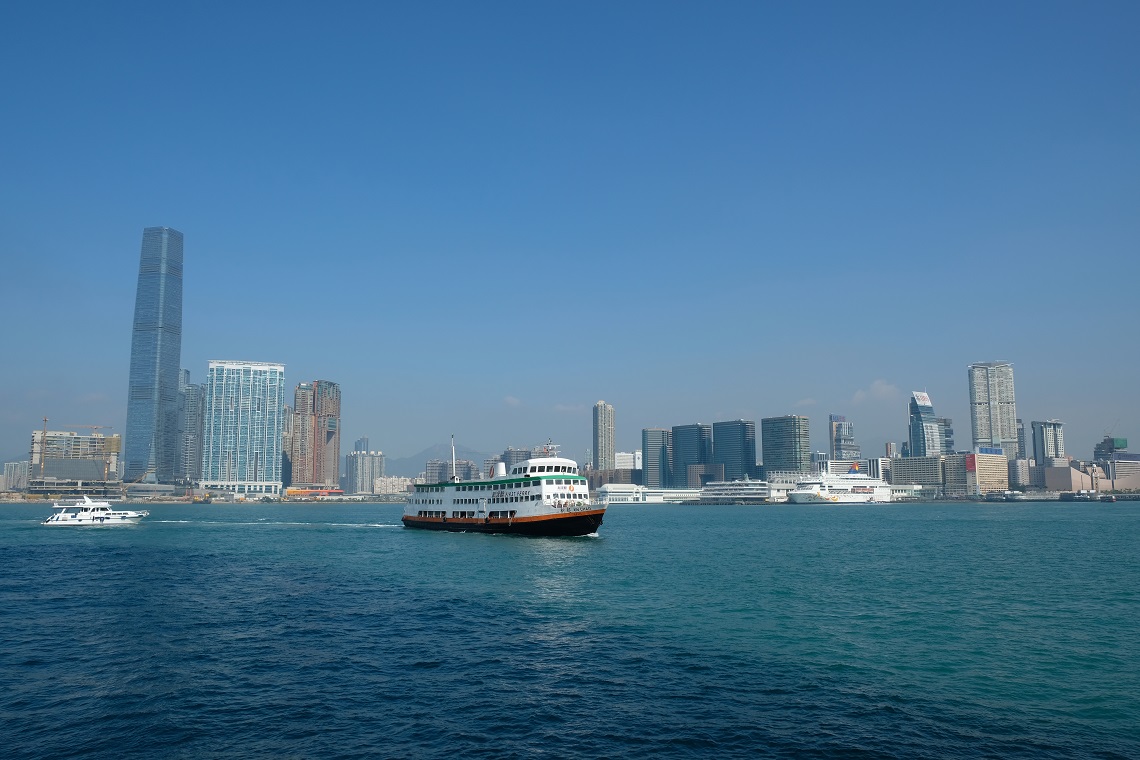







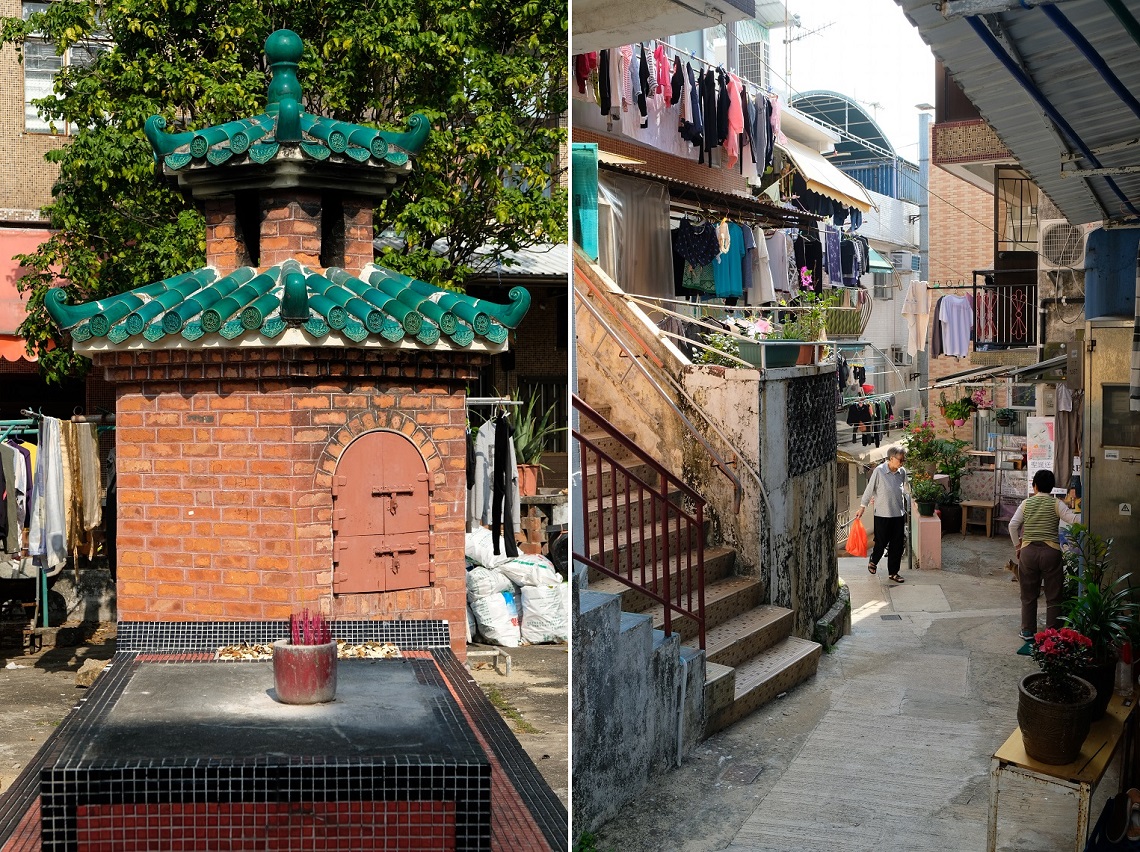


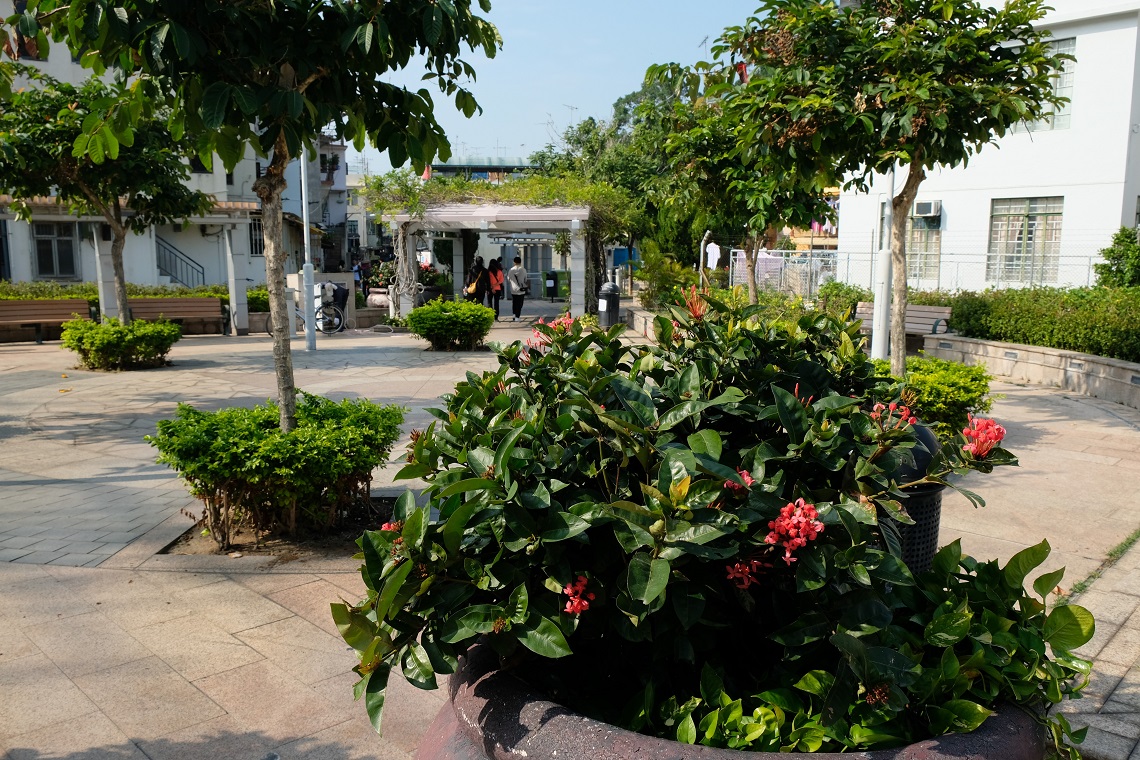













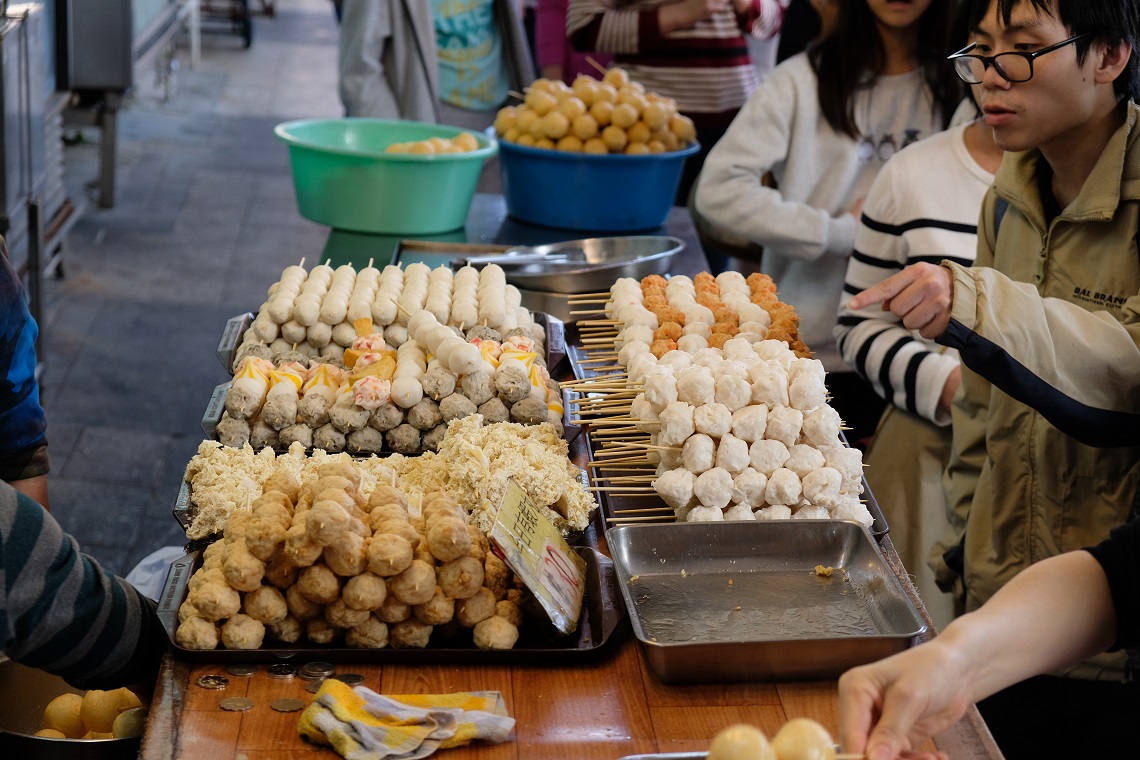





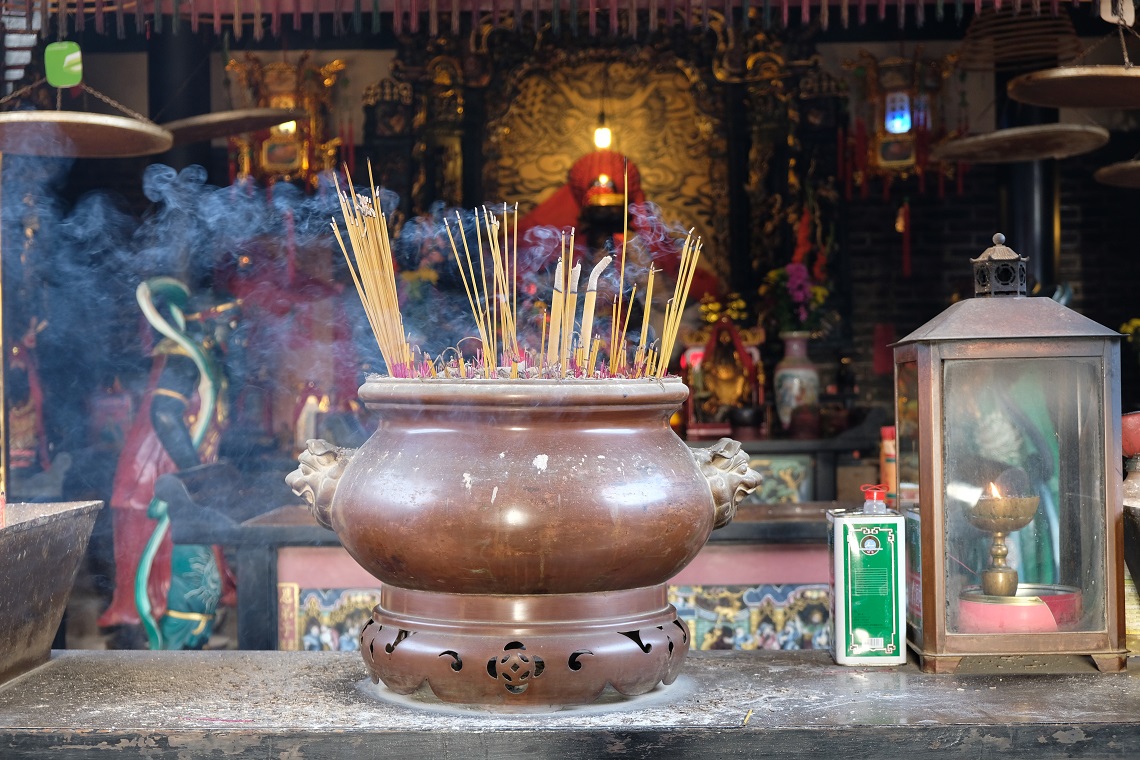
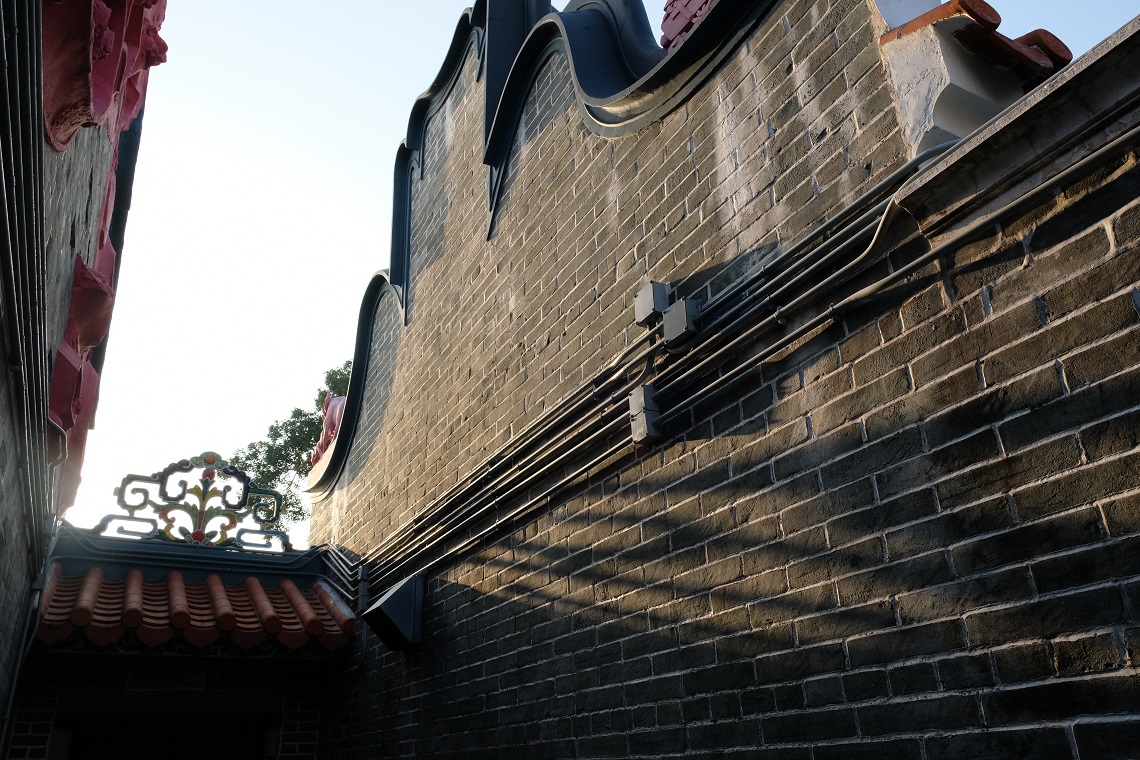


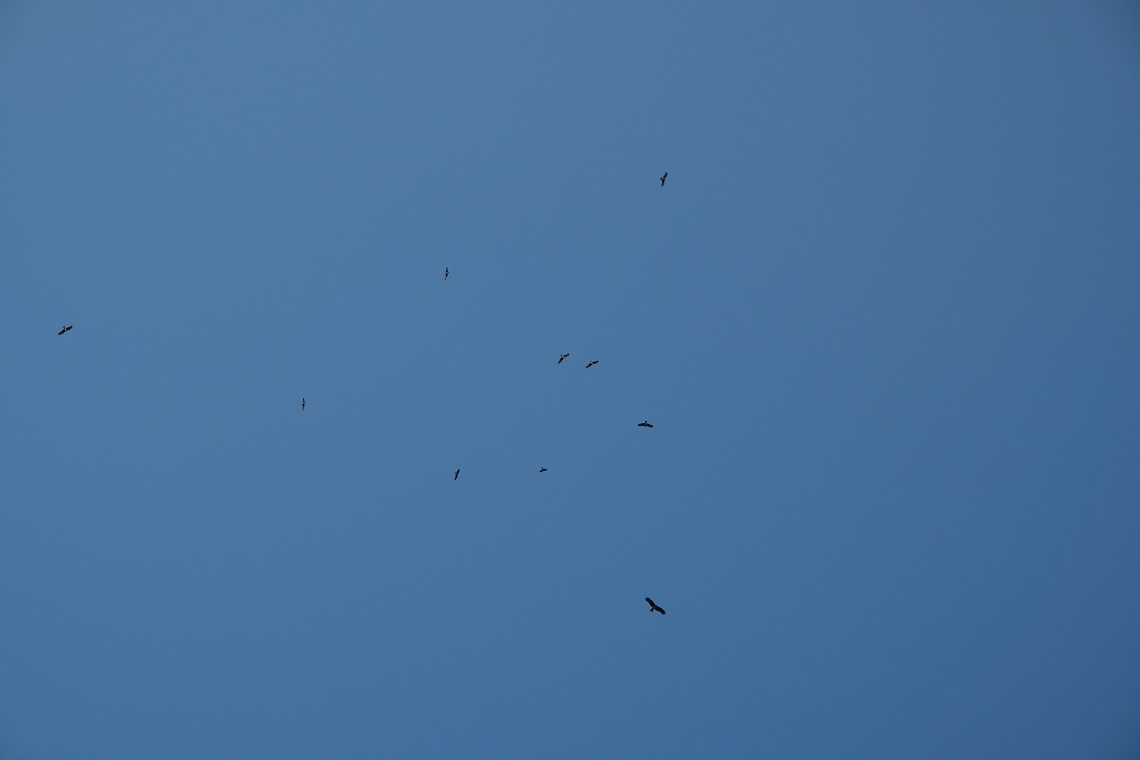

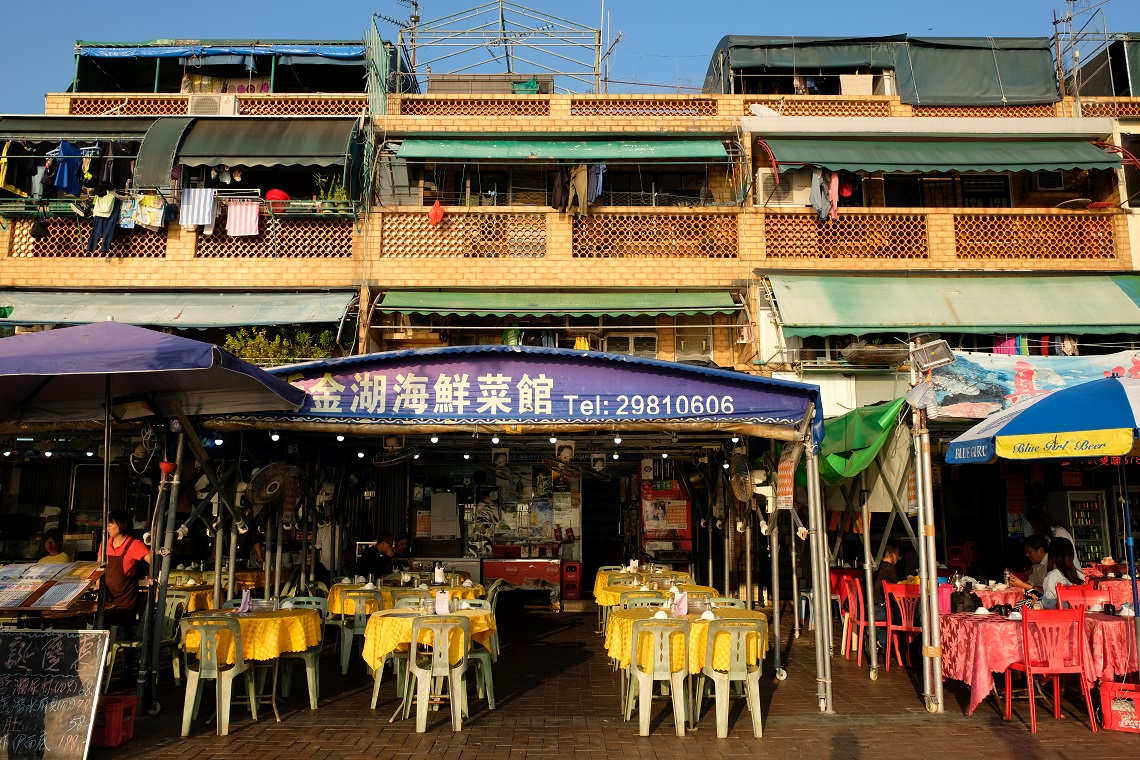
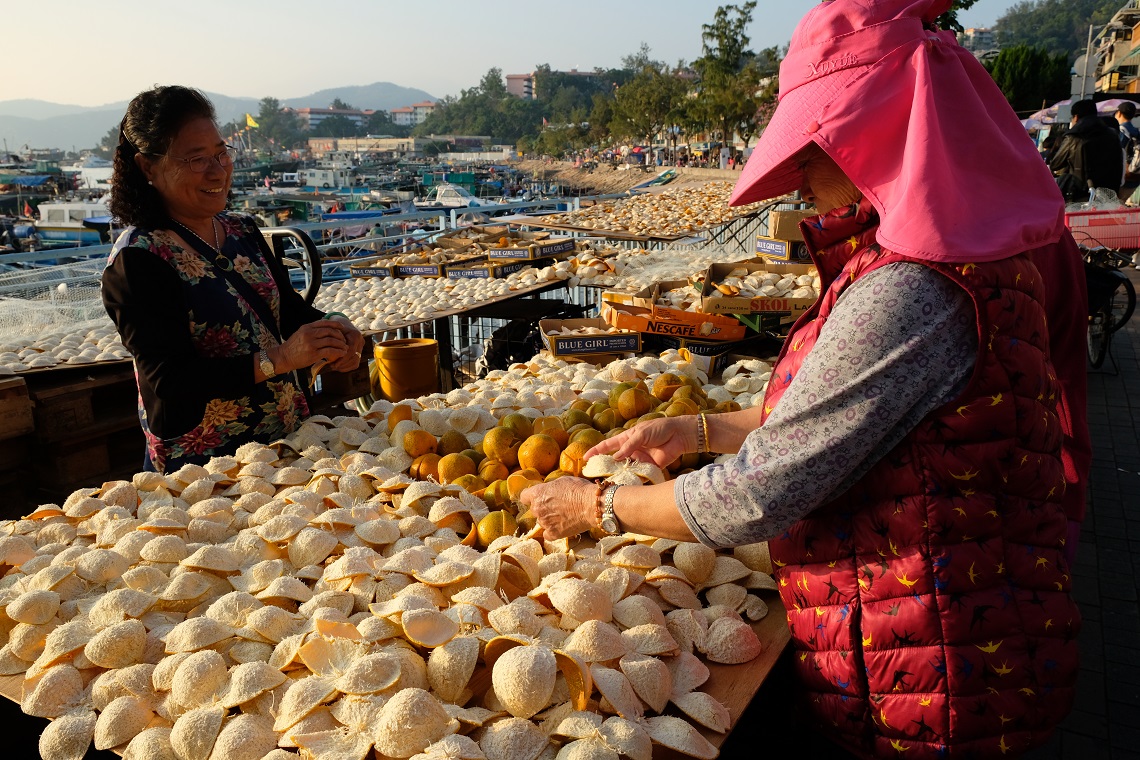

Looks gorgeous man 🙂 ❤
LikeLiked by 2 people
The island was more picturesque than what I expected. It was a nice short escape from the hustle and bustle of the city. Thanks for dropping by!
LikeLiked by 2 people
Welcome bd, m glad I read it first thing in morning 🙂 🙂
LikeLiked by 2 people
That is a very satisfying virtual tour thanks to your amazing street photos and landscapes.
LikeLiked by 1 person
Much appreciated, Umashankar. Despite its small size, Cheung Chau packs a good amount of photogenic corners.
LikeLike
Great post! I’ve never heard of Cheung Chau. This is good timing as we will have a 12hr stop-over in Hong Kong on our way home and have visited the usual sites already. This gives us something else to do!
LikeLiked by 2 people
And being Hong Kong you know how efficient the transport system in the city is. So with proper planning, you can visit Cheung Chau (and maybe another place as well) during your layover.
LikeLiked by 2 people
Great thanks!
LikeLiked by 1 person
Interesting. When I visited HK, I gave it a miss because the frequency of ferry service on Sundays was less and it would have wasted a lot of time. Thanks for the visual journey of Cheung Chau
LikeLiked by 1 person
My friend and I happened to go to Cheung Chau on a Wednesday afternoon, and maybe that’s why we didn’t find any trouble with the ferry.
LikeLiked by 1 person
Great 🙂
LikeLiked by 1 person
Great street photo. I like the way you capture the objects.
LikeLiked by 1 person
Thank you, Phebie. I wish I stayed longer on the island to watch the sunset. Maybe next time!
LikeLike
Bama what a very interesting post. When we visited and had a weekend in Hong Kong, we were delighted to discover the options of so many hikes and beaches. We had one day for our adventure and in our case, we chose to hike the ridge of the Dragons Tail. And it was a great choice, we too were so surprised by how much greenery there is on the periphery of the urban Hong Kong.
My favorite photo of all your lovely photos, is the one of the orange peels drying in the sun and as well of course I love the one of the dim sum steamers as we being great lovers of dim sum headed to Hong Kong to eat as much of it as possible.
The history about the pirate and converting him into a pirate police is an interesting approach and makes complete sense as no doubt he knows the industry so to speak, inside out already. We have seen great results in Nicaragua of this turning of poachers into turtle protection environmental officers when formerly they were the ones catching and eating the turtles.
Interesting post, and next time we are in Hong Kong, this would be a great choice for a day trip.
Peta
LikeLiked by 1 person
Hong Kong’s hiking trails and small islands are among the reasons why I always enjoy going back to this fascinating city. Having a travel partner who speaks Cantonese definitely helps a lot — that was also how we learned about those orange peels. Every time I visit Hong Kong I never miss having dim sum because honestly the ones I tried in Jakarta were not nearly as good as what we can get in this part of the world.
It’s interesting what you’ve seen in Nicaragua, and I also read that this approach has been implemented quite successfully in other parts of the world.
LikeLike
So idyllic, reminded me a little of Shek-O, especially the rock formations
LikeLiked by 1 person
Shek O was also nice and peaceful. Both are examples of parts of Hong Kong that provide an antidote to the stressful life the locals are used to.
LikeLiked by 1 person
I love it, I wish it was my country that I am fillings so much like this. I pray one day let it happened to my own country.
LikeLiked by 1 person
Thanks! We certainly hope that good things will happen more often, not only in our countries, but also in the world.
LikeLike
Another part of HK that we seldom see.
LikeLiked by 2 people
Indeed, and what I know is that there are still more places Hong Kong has to offer for those who are willing to explore its four corners.
LikeLiked by 1 person
Ya. I’m planning another blog post on Sai Kung and the island cruise.
LikeLiked by 1 person
Mas Bamaaaa… waa, seperti bukan di HK yaa? Benar yang seperti mas Bama bilang di komentar sebelumnya, Cheung Chau ini picturesque banget, calm dan menyimpan banyak keindahan yang gak banyak diketahui orang yang pergi ke HK (termasuk aku deh hehehe). Aku suka cerita soal orange peeling itu, uugh… kereeen banget dan fried ice-creamnya waaah… aku juga kepengen… hahaha…
BTW, bau-bau honey itu beneran? masak sih kalau gak ada, bisa kecium banget gitu?
Satu lagi, Mas James kan fasih Cantonese … terus mas Bama dah belajar belom? Sekarang udah bisa gak? 😀 😀 😀
LikeLiked by 1 person
Untung James bisa ngomong Bahasa Kanton, jadi bisa tau deh ibu-ibu itu lagi jemur apa dan buat apa. Di Indonesia saya pernah sih lihat tempat-tempat yang jual es krim goreng. Jadi penasaran apa jangan-jangan persis sama kayak yang di Hong Kong. Sensasinya unik, anget di luar, tapi pas digigit mak nyesss dingin.
Iya mbak, saya juga heran kok tau-tau ada aroma madu aja gitu. Andaikan saya ahli botani mungkin saya bisa identifikasi itu dari tanaman apa.
Bahasa Kanton yang saya bisa cuma beberapa nama makanan aja mbak, hehe.. 😀
LikeLiked by 1 person
I imagine enjoying Cheung Chau by taking a calm stroll along the village streets, the Great Wall, and the beach in the morning then have a breakfast with coffee. Then in the afternoon, take a short jogging on the running track.
Is the island that small there’s no wide streets or cars?
LikeLiked by 1 person
You definitely can do that, Nug. I just happened to be there in the afternoon, and I remember that night we had a dinner in the city so we had to leave the island before dark.
There’s no car on the island — the only motorized vehicles allowed are a small ambulance, a fire engine and a police van.
LikeLiked by 1 person
Thanks for sharing another hidden gem of Hong Kong, Bama! Although I have tried orange peel before, I didn’t know its appearance. Don’t you think it looks like dried coconut? 🙂 Your trip reminds me of my last visit to Tai O. In comparison to Kowloon or Hong Kong Island, the village looks like a different world. No skyscrapers, no towering buildings, only a handful of people walk through the small streets filled with dried seafood stalls.
LikeLiked by 1 person
How does it taste? Because I know when it’s freshly peeled, it can be very bitter.
That’s what I love about Hong Kong. On the one hand you have this ultramodern skyscrapers reaching for the sky. But on the other hand there are places like Tai O and Cheung Chau where the locals seem to live a much simpler life.
LikeLike
The orange peel still tastes bitter once it’s dried 🙂 Normally, it has to be consumed together with other medicinal herbs (as James already mentioned). In Vietnam, the dried orange peel is a kind of snack 🙂 The bitterness is neutralised by coating it with sugar and honey. I personally don’t like its taste but I like the intense orange scent.
LikeLiked by 1 person
Strangely your description actually makes me want to try it, especially the one coated with sugar and honey. 🙂
LikeLiked by 1 person
Nice write up and pics
LikeLiked by 1 person
Thanks! Really appreciate your kind words.
LikeLike
What a lovely post Bama. Beautiful photos! I first went to Cheung Chau in 1978 when it was little more than a sleepy fishing village. It stuck in my memory so much that I went back there when I had 3 days in HK last June. I’ll post about it eventually. It’s a sweet place, and worth a visit.
Alison
LikeLiked by 1 person
Wow, Cheung Chau must have been a much calmer place when you first went there. It still is, although you can tell that it’s quite popular for day trips now. Looking forward to reading your stories about this island!
LikeLiked by 1 person
It is so great that Hong Kong has this peaceful haven so close by. It looks like such a soothing respite from the busy city and I’m glad to hear that city dwellers can slow down when they arrive on the island. I am intrigued by the fried ice cream and I like your photo of the orange peels drying in the sun. I have a few recipes that call for dried orange peel and it never quite gets dry on my not so hot/sunny window ledge.
LikeLiked by 1 person
That’s one of the things I envy Hong Kongers the most because in Jakarta to go to such calm and secluded places usually people have to bear the frustrating traffic first.
I didn’t know that orange peel can be used/consumed in a variety of ways. Are the recipes you have Asian?
LikeLiked by 1 person
I use it in some slow cooking stews, mostly Middle Eastern inspired. My favourite is a Moroccan lamb stew. I discard the peel before serving.
LikeLiked by 1 person
I hope I can try it in Morocco one day!
LikeLike
It’s great to see another side of Hong Kong, thank you.
LikeLiked by 1 person
I think for the best experience any trip to Hong Kong should include skyscrapers, dining, hiking, beaches, and islands. Thanks Debra!
LikeLike
It seems so incongruous to find this place so close to what we all think of as purely urban. But I guess it’s like a beach vacation, with the low-rise buildings, shores, and of course, ice cream! Very fun discovery for me (via you)!
LikeLiked by 1 person
And yet there are more islands in Hong Kong like this. One of James’s aunts actually mentioned to us another island which she said was even calmer than Cheung Chau. But we didn’t have enough time to go there.
It’s a bit off topic, but I’m sooo excited to know that you’re going to Bhutan!
LikeLiked by 1 person
I just wish I had more time before or after the Bhutan trip! For me to fly to Asia is a big deal, so I am tacking at least a few days in Bangkok to the front of the Bhutan trip, but how I would love to be able to pop over to Hong Kong, or SE Asia, or Nepal again, etc. Unfortunately, work and regular life call me back … Anyway, I am getting super excited myself! I leave in exactly one month, and I got the hiking group list yesterday; there are only 6 of us, which is nice and small. I don’t know anyone, as usual (all 5 others from the US west coast), but I like making new trekking friends, and I absolutely can’t wait to see and get to know Bhutan. I’ll report back!
LikeLiked by 1 person
When you’re in Bhutan I’ll be in the other side of Asia, in a country which required me to go back and forth to its embassy in Jakarta to get a visa. Then, when I return to Indonesia I’ll start a new job in a new company. 2019 has been a busy year so far! Please share with us your travel experiences in Bhutan after you come back to the US (you know I’ll share mine). 🙂
LikeLiked by 1 person
Bama, what a gorgeous post this is! Being a public holiday and all, I was bracing for massive crowds on Cheung Chau, but I was happily surprised to find that it was still relatively quiet once we left the area around the main pier. My favorite experiences were stumbling across that interesting shop and going inside Yuk Hui Temple. Next time, I will take you to the southwest corner and a small cave that’s said to be the place where Cheung Po Tsai once stored his treasure.
LikeLiked by 1 person
Thanks James! It really was a nice surprise to see how Cheung Chau was not overrun by tourists when we went there. Yuk Hui Temple is really beautiful, and the fact that we went there in the afternoon with the temple’s facade bathed in the warm color of the sunlight made it even prettier.
LikeLiked by 1 person
Cheng Chau looks really cool and I’m reminded that next time I’m in HK, I need to explore the outer-lying areas like this for culture, hiking, beaches, etc. So many orange peels! I’ve never seen them dried like that. Thanks for an enlightening post on a lesser known part of the region.
LikeLiked by 1 person
I recommend Sai Kung as well for its great hiking trails and white sand beaches. Going out in nature is among the things I always anticipate every time I get the chance to go back to Hong Kong. You’re welcome, Kelly! And thanks for reading.
LikeLiked by 1 person
Informative post as usual, Bama. I never thought that there would be a place like this in HK. In my mind, HK was full with skyscrapers.. It looks like lovely place to walk and bike around..
LikeLiked by 1 person
If you haven’t been to Hong Kong, maybe it’s time to consider a visit? 🙂 It has a lot more than just skyscrapers.
LikeLiked by 1 person
I am not the typical big city person, Bama. Before, I imagined HK is like Dubai. Therefore I did not put it on the list. I think, now I have reason to put it on the list. Thanks for showing the other part of HK that I never imagined before..
LikeLiked by 1 person
And now you made me even less interested in visiting Dubai. 😀
LikeLiked by 1 person
Awwww… Did not mean to kill the mood, Bama.. But, well, yeah… I think there are other 193 countries in the world. Some I guess you had explored and the rests are waiting for you :-D.. So, UAE may wait 😀
LikeLiked by 1 person
Actually I’m more interested in Abu Dhabi for its museums. We’ll see which city in the UAE I will visit first. 🙂
LikeLiked by 1 person
No cars, slow pace of life, beaches and greenery? Yeah, that is nothing like the Hong Kong I saw. I’ll have to go there next time. It looks like a great way to spend the day in a quieter place. Question: was James able to slow down and enjoy it or did he speed walk there too?
LikeLiked by 1 person
Jakarta has slowed him down a little bit. He still walks fast, but not nearly as fast as when he was still living in Hong Kong. So the next time he takes you around don’t worry about having to watch him closely in order to keep up with his pace. 😀
LikeLike
Nice write up
I think Hong Kong is the best business city to tour in China. But have you ever thought of LCC Canopy Walkway the longest in Africa. You can always experience the difference between Asia and Africa
LikeLiked by 1 person
I must admit I had never heard of LCC Canopy Walkway before. I just googled it and it looks fun! It’s always nice to see initiatives aiming at bringing urban dwellers closer with nature because the truth is we as human beings won’t be able to thrive without a healthy planet.
LikeLiked by 1 person
Okay cool am glad you know what it is. You can take a tour on on anyone close to you but LCC Canopy Walkway is in Lagos
LikeLiked by 1 person